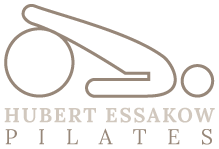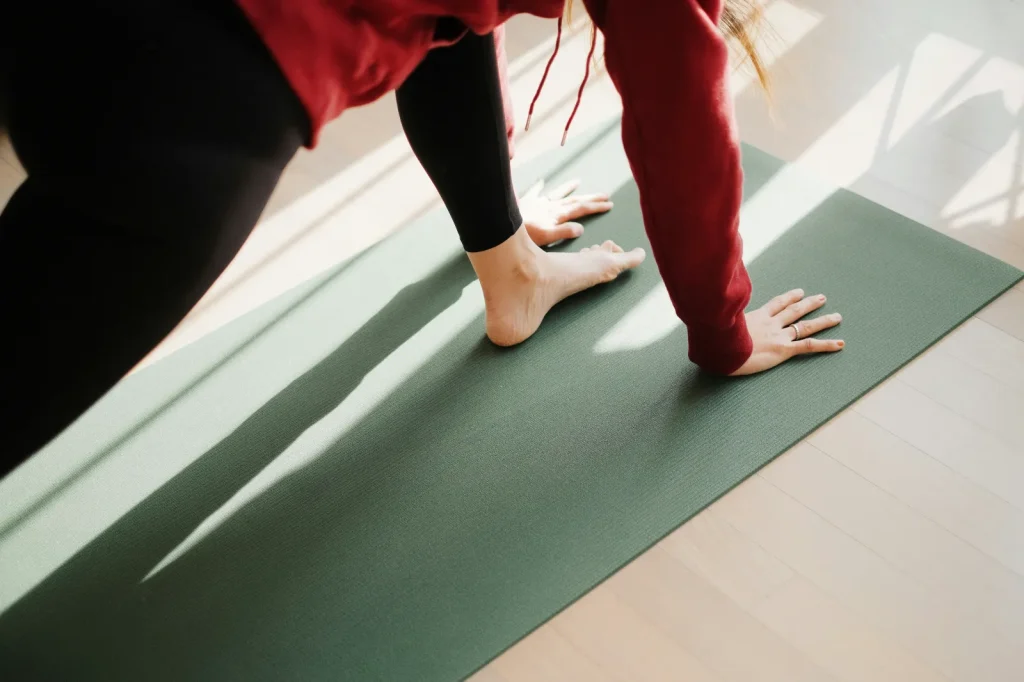Pilates is no longer a secret of elite dancers and athletes. It has grown into a popular workout worldwide, blending strength, flexibility, and mindfulness. Today, it’s one of the fastest-growing fitness trends, with over 12 million people practicing Pilates regularly in the United States alone. But did you know there are many different types of Pilates? Each style brings a unique approach to movement, allowing you to tailor your practice to your specific needs and goals.
Whether you’re new to Pilates or a seasoned pro, this guide will help you navigate through the diverse world of Pilates styles. Let’s explore!
The Evolution and Principles of Pilates
Origin and Founder
Pilates was developed in the early 20th century by Joseph Pilates, a visionary who sought to improve physical rehabilitation for soldiers during World War I. His method, initially called “Contrology,” emphasised the connection between mind and body, focusing on controlled movements to enhance strength, flexibility, and posture. Today, Pilates is a global phenomenon, continually evolving but retaining its core principles.
Core Principles
At its core, Pilates is built on six key principles: concentration, control, centring, flow, precision, and breathing. These form the foundation of every Pilates practice, guiding movements to ensure a balanced and mindful workout. Whether it’s a traditional or modern approach, these principles are the heart of all types of Pilates, helping practitioners improve physical health and mental well-being.
1. Mat Pilates
Mat Pilates is the starting point for many. It’s often regarded as the foundation of all Pilates exercises because it uses your own body weight for resistance. All you need is a mat, making it accessible and easy to practice almost anywhere.
Why Choose Mat Pilates?
Beginner-Friendly: It’s an excellent entry point for those new to Pilates.
Core Strength: Focuses on building core stability and flexibility through a series of floor exercises.
Cost-Effective: Requires minimal equipment, just a mat and your body.
Mat Pilates teaches you to engage your core, align your spine, and move with precision. Once you’ve mastered these basics, you can explore other, more advanced forms of Pilates.
2. Reformer Pilates
Take your practice to the next level with Reformer Pilates. This style introduces equipment, most notably the Pilates Reformer, a machine designed by Joseph Pilates himself. The Reformer uses springs, a sliding carriage, and various attachments to create resistance, providing a dynamic and versatile workout.
Why Reformer Pilates Stands Out
Increased Resistance: The Reformer adds resistance, making it easier to build strength and muscle tone.
Range of Movements: Offers a wider range of exercises compared to Mat Pilates, targeting muscles more effectively.
Rehabilitation: Often used in rehabilitation due to its low-impact nature, making it gentle on joints.
Reformer Pilates is ideal for those looking to deepen their practice, enhance muscle tone, and achieve specific fitness goals. Plus, it’s great fun!
3. Clinical or Rehabilitation Pilates
Clinical Pilates, also known as Rehabilitation Pilates, is a therapeutic approach that integrates traditional Pilates exercises into physiotherapy. It’s tailored to individuals recovering from injuries or surgery, focusing on safety and gradual strengthening.
Who Benefits from Clinical Pilates?
Rehabilitation Patients: Those recovering from injury, surgery, or dealing with chronic conditions.
Customised Workouts: Exercises are adjusted to meet specific rehabilitation needs, ensuring a safe and effective recovery.
Core Stability: Helps improve balance, posture, and core stability without putting undue stress on the body.
If you’re looking to regain strength after an injury, Clinical Pilates could be your pathway to a healthier, stronger body.
4. Classical Pilates
For purists, Classical Pilates stays true to Joseph Pilates’ original method. It maintains the traditional sequence of exercises, following the exact order and techniques designed by the creator. This style is about discipline, structure, and precision.
Why Classical Pilates?
Authenticity: Offers a genuine experience of Joseph Pilates’ original method.
Disciplined Practice: Follows a strict sequence, promoting consistency and mastery.
Mind-Body Connection: Deepens the understanding of the mind-body link through controlled, precise movements.
If you love a structured, traditional approach, Classical Pilates is a perfect fit.
5. Contemporary or Modern Pilates
Contemporary Pilates represents an evolution of the original practice, blending modern exercise science and biomechanics. It adapts classical exercises to meet today’s understanding of the body, making Pilates more inclusive and versatile.
Features of Contemporary Pilates
Flexible Approach: Modifies traditional exercises to cater to different fitness levels and goals.
Integration of New Techniques: Often includes movements from yoga, strength training, and physiotherapy.
Accessibility: Suitable for athletes, seniors, and those with physical challenges.
Contemporary Pilates is perfect if you’re looking for a more adaptable, inclusive practice that can be personalised to your fitness level.
6. Stott Pilates
A modern interpretation of the classic method, Stott Pilates emphasises restoring the natural curvature of the spine and involves props like resistance bands, fitness circles, and stability balls. It was developed by Lindsay and Moira Merrithew, focusing on spinal alignment and muscle rebalancing.
Why Try Stott Pilates?
Spinal Health: prioritises correct alignment and spinal curvature.
Variety of Props: Adds diversity to the workout with different equipment.
Muscle Balance: Focuses on balancing strength and flexibility across muscle groups.
Stott Pilates is excellent for those who want to focus on posture, alignment, and balanced muscle conditioning.
7. Power Pilates
If you crave a more intense, sweat-inducing workout, Power Pilates is your answer. This vigorous style combines traditional Pilates movements with strength training and cardio elements, creating a full-body workout that improves endurance and muscle tone.
Key Benefits of Power Pilates
Intense Workout: Elevates heart rate and builds stamina.
Strength and Cardio: Combines elements of strength training with cardiovascular exercise.
Versatile and Dynamic: Ideal for those looking to challenge themselves and boost their fitness levels.
Perfect for fitness enthusiasts who want to mix strength and cardio, Power Pilates can take your workout to new heights.
8. AeroPilates
AeroPilates brings a unique twist by incorporating aerobic elements into the traditional Pilates framework. Using a reformer machine equipped with a rebounder, it offers a low-impact cardiovascular workout that still emphasises core strength and precision.
Why Choose AeroPilates?
Cardio and Core: Combines heart-pumping cardio with core-strengthening Pilates.
Low-Impact: Gentle on the joints, making it suitable for a wide range of fitness levels.
Engaging Workout: Keeps things dynamic and fun, ensuring a well-rounded exercise routine.
AeroPilates is great for those who want to improve their cardiovascular health without sacrificing the fundamental benefits of Pilates.
9. Hybrid Pilates Styles
The versatility of Pilates has led to the development of Hybrid Pilates, which merges Pilates with other forms of exercise, such as yoga, barre, or strength training. These fusion classes offer a more varied workout, targeting multiple fitness aspects simultaneously.
Why Hybrid Pilates Works
Variety: Keeps workouts interesting and prevents monotony.
Comprehensive Fitness: Combines the best elements of different fitness practices.
Flexibility and Strength: Enhances flexibility, balance, and overall body strength.
Hybrid Pilates is for those who love variety and want a more comprehensive fitness routine.
Choosing the Right Type of Pilates for You
With so many types of Pilates to choose from, how do you know which one is right for you? Here are a few tips:
Evaluate Your Goals: Are you looking to rehabilitate an injury, build muscle, or enhance flexibility?
Consider Your Fitness Level: Beginners may find Mat Pilates more accessible, while those with experience might enjoy the challenge of Reformer or Power Pilates.
Experiment: Don’t be afraid to try different styles. Each type offers unique benefits that could complement your fitness journey.
Remember, the best Pilates style is the one that makes you feel good and keeps you coming back for more!
The Benefits of Pilates Across Different Styles
No matter which type of Pilates you choose, there are some universal benefits:
Core Strength: Every Pilates style emphasises a strong core, improving posture and stability.
Flexibility and Balance: Regular practice enhances flexibility, muscle tone, and overall body balance.
Mind-Body Connection: Pilates encourages mindfulness, helping reduce stress and promote mental clarity.
These benefits make Pilates a holistic workout that caters to the needs of both body and mind.
Conclusion: Embrace the Diversity of Pilates
Pilates is more than just an exercise—it’s a journey toward holistic health. From the simplicity of Mat Pilates to the dynamic challenge of Reformer Pilates, or the therapeutic benefits of Clinical Pilates, there’s a style for everyone. Embrace the diversity, experiment, and find your perfect fit. Your body will thank you for it!
So, which type of Pilates will you try next? Whatever your choice, step onto that mat (or Reformer) and enjoy the journey toward a stronger, healthier you!
FAQs
What should I wear to Pilates classes?
Wear comfortable, form-fitting clothes that allow you to move freely. Avoid anything too loose or restrictive. Barefoot or grip socks are best for stability.
How often should I do Pilates to see results?
Aim for 2-3 times a week to see noticeable improvements in strength, flexibility, and posture. Consistency is key!
Can Pilates help with weight loss?
Yes! While Pilates primarily focuses on strength and flexibility, some styles (like Power Pilates and AeroPilates) incorporate cardio, which can aid in weight loss when paired with a balanced diet.

